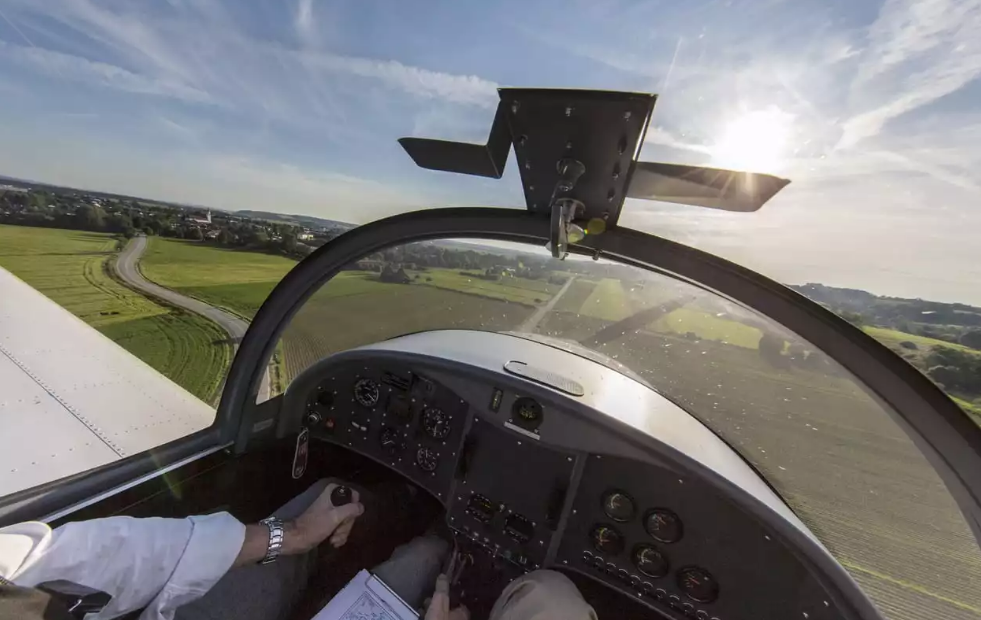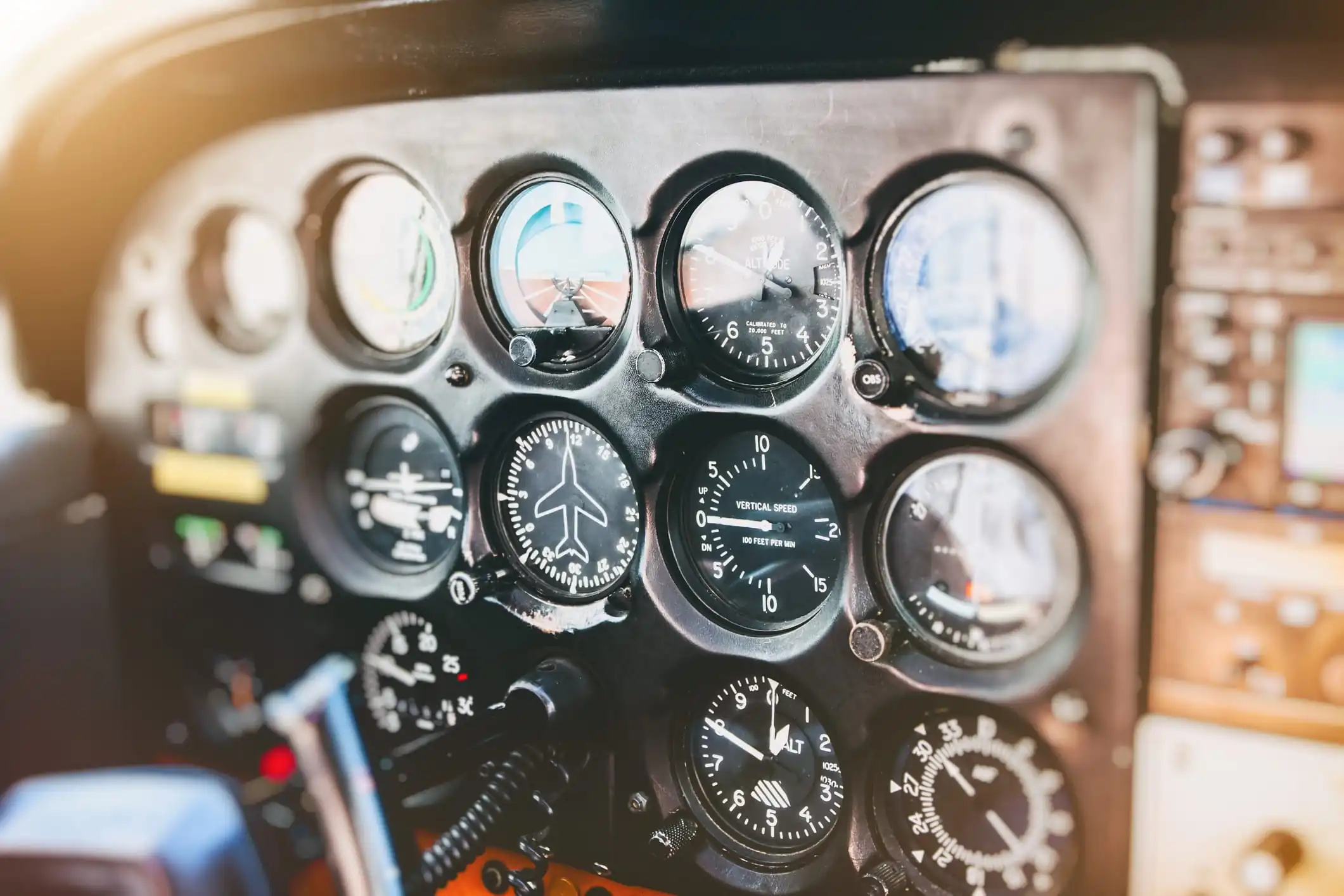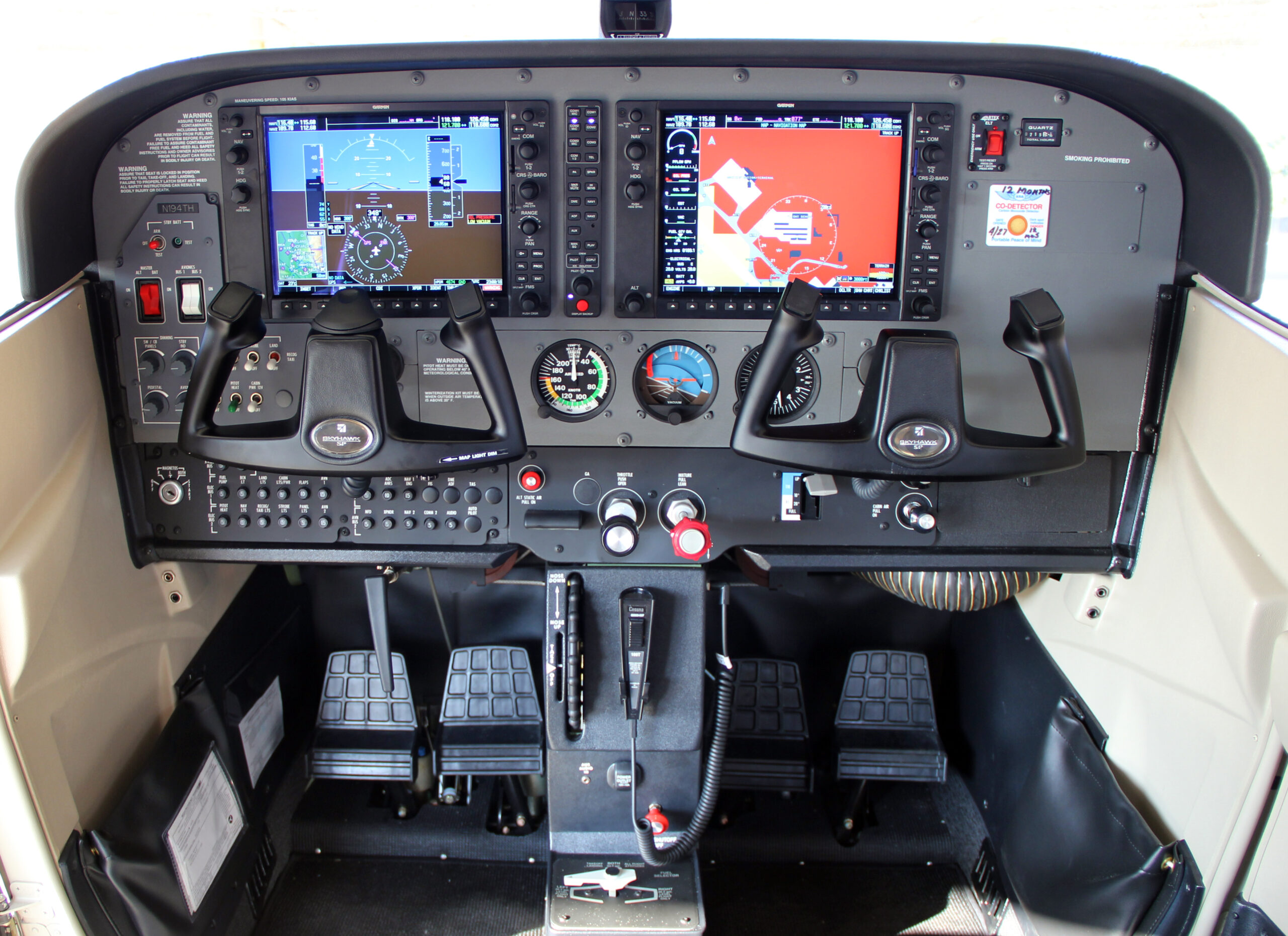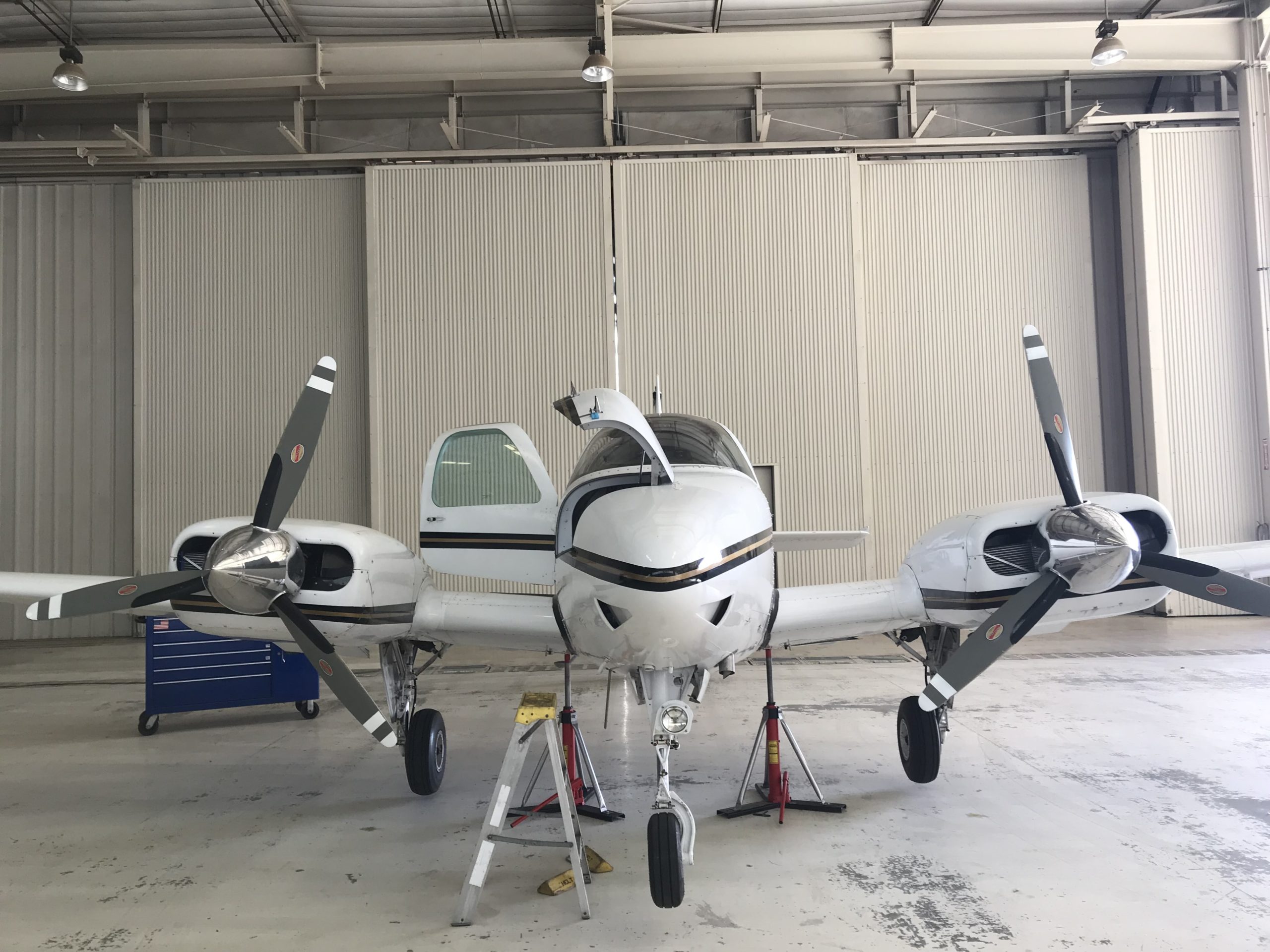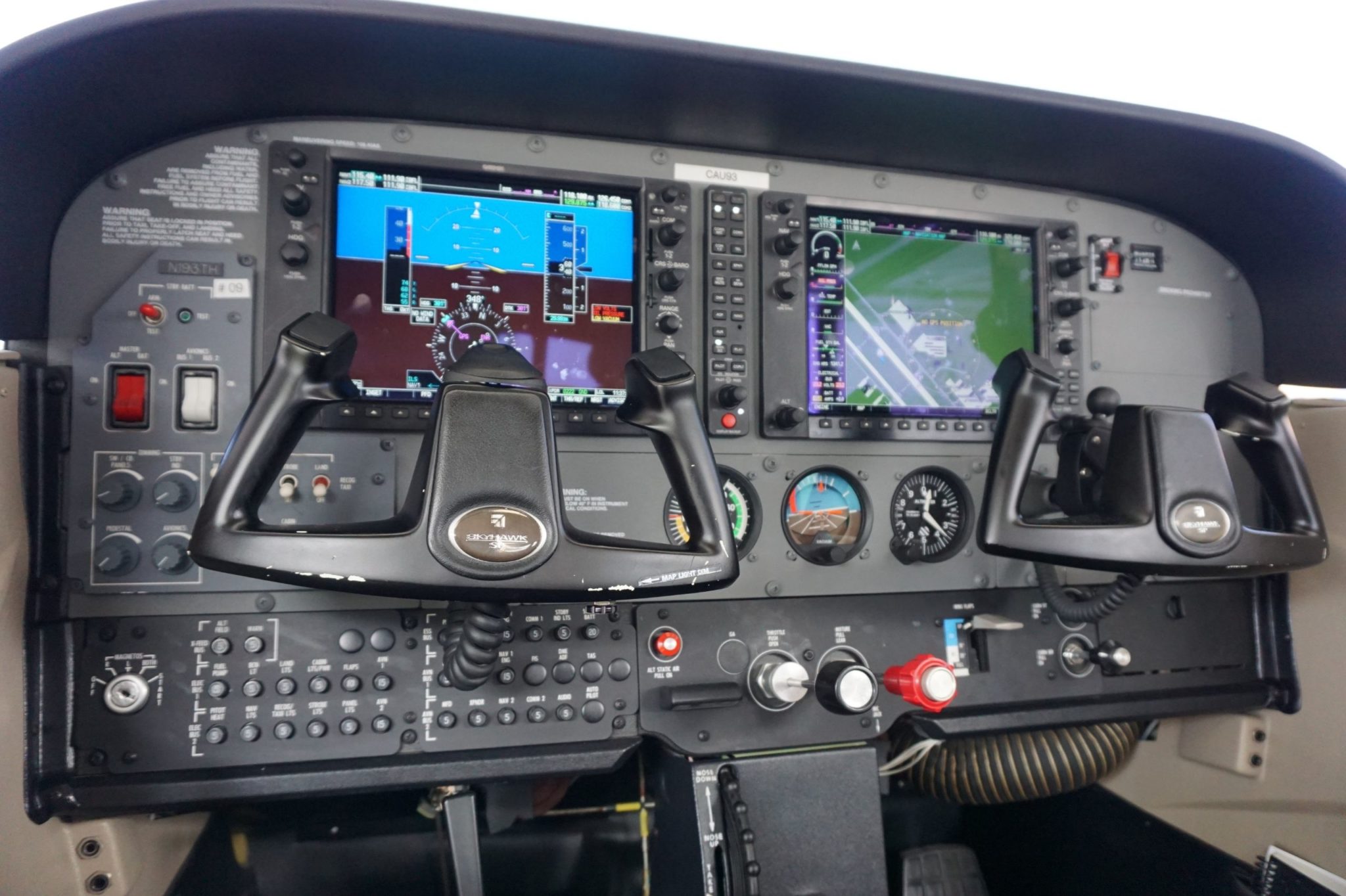Some pilots say that the only thing an airplane has in common with cars is that the tires are rubber, and that’s not really too far off the mark. The Wright brothers and their predecessors and later aeronauts developed a plethora of ideas from scratch that differ radically from the simple mechanics of ground-based transportation.
Take the cockpit, for instance. When a non-pilot gets a look inside a real one, even if it’s a cockpit in a “small” single-engine plane, the effect is usually completely overwhelming. All those dials and switches and, for TAAs (Technologically-Advanced Aircraft), the video screens, especially if they’re powered on, are spectacularly complex-looking.
This article’s focus will be primarily on some of the individual, “round-dial” instruments (sometimes jokingly-called steam gauges) that are commonplace in most general aviation aircraft today. A full discussion of all possible instrument errors is part of a normal pilot-training curriculum, but that is beyond the scope of this article.
The Six-Pack
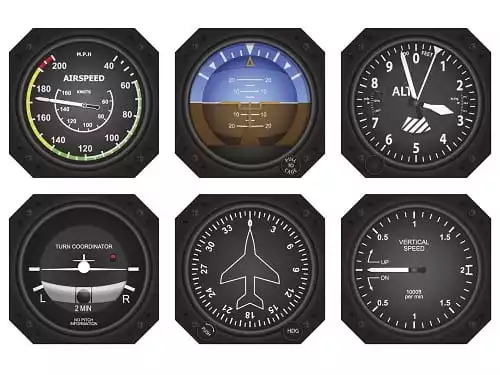
You’ll want to refer to the graphic in this blog. It represents what’s called a six-pack, which presents the main six instruments in a common display in aircraft of the type we’re discussing. Of course, most of the instrument is hidden behind the glass-and-metal “instrument head” that appears on the flight panel.
Beginning in upper left, clockwise, they are:
- Airspeed Indicator
- Artificial Horizon
- Altimeter
- Vertical Speed Indicator
- Gyro Compass
- Turn-and-Bank Indicator
The newer, TAA cockpits still have round-dial instruments as backups but rely on more advanced electronics and video displays plus GPS for much of what drives their information presentations. They have a display quite different from the standard six-pack. Let’s save the TAA world for another blog.
Basic Instrument Displays
Almost all non-pilots assume that the pilot simply learns to read the instruments he or she uses, then works that “information” into handling the airplane. For example, a common thought of a non-pilot would be that when an airspeed indicator shows 100 (100 K, or 100 Knots, a measure of airspeed), the pilot knows that the airplane is traveling through the air at 100K. One knot is equal to 1.15 miles per hour.
Things are not so simple, however. And pilots must learn not only to “read” the instrument displays, but also to understand that every instrument has essentially-unavoidable errors for which the pilot must correct constantly. For example, that 100K airspeed indication could be identifying that the airplane is traveling at 85K or 112K, depending on several variables.
Learning to fly includes understanding these instrument errors and correcting for them, usually “on the fly.” So let’s have a look at a sampling of these errors, why they happen, and what properly-trained pilots do about them.
Sources of Instrument Errors
There are three main sources of error in instruments.
- One is related to how the instrument gets its information (from the sensors, typically outside the aircraft) and how the information “feed” to the instrument heads can be misleading.
- Another source can be the design of the instrument itself.
- The third is groups of errors occur if certain airplane systems stop working correctly.
Instrument Sensor-Based Errors
The parts of an airplane that obtain and send information to the visible instrument display can be the sources of errors. These errors are unavoidable in airplanes that have the older type of instrumentation.
The Airspeed Indicator
Let’s stick with the airspeed indicator for a moment. See the six-pack’s upper-left instrument head.The mechanism that provides the input for airspeed is what is called a pitot-static system. The pitot portion of this system is a two that sticks forward into the oncoming wind, but it has a hole in it like a straw. The faster the airplane is moving through the air, the higher the pressure of the air blowing into that hole. The air pressure blowing into the hold moves an interior vein, and that turns the dial on the airspeed indicator.
This works fine when the airplane is traveling straight into a wind. But if the airplane is turning or climbing or descending, that tube is not pointing directly into what’s called the “relative wind.” During these maneuvers other than straight-and-level flight, the tube is pointing a little bit at an angle to the wind blowing into it. That results in less pressure blowing into the hole, and, as a result, the airspeed indicator reads too low. It says you’re moving more slowly than you really are.
In this case, the way the pitot tube is installed on the outside of the aircraft is what creates the errors. They are unavoidable, of course. As mentioned before, a GPS-based system may not have these errors, but most small airplanes do not yet have GPS since so many of them were made before that technology became commonplace in newly-built aircraft.
Pilots know all, so when they are trying to maintain a particular airspeed in a climb, descent, or turn, they know to add an adjustment mentally. In other words, they are interpreting rather than simply readingwhat the instrument displays.
The Altimeter
The altimeter (see the six-pack’s upper right instrument head) shows a pilot how high the airplane is above sea level. And when there is standard atmospheric pressure (29.92 inches of mercury at sea level), the altimeter will read correctly. However, it is a rare moment when precisely-standard atmospheric pressure prevails. Usually the pressure is a little higher or a little lower.
There is an adjustment in all of the oldest altimeters that lets the pilot set the current, correct outside air pressure. (The pilot obtains this information typically by listening to a weather broadcast or other automated radio communications that come from the air traffic control system). When flying for a long distance, a pilot will need to check on the outside air pressure several times over the course of flight, and then set that information into the altimeter. Failing that, the altimeter will not read correctly.
The problem is that air pressure can change more often than a pilot checks. That means that the pilot may not know exactly how high above sea level to the airplane is at a given moment. It is true that the changes are usually not extreme (being off by 150 feet would be rare if the pilot checks frequently enough), but those pressure differences do occur and result in the instrument being inaccurate by small amounts most of the time.
Just as a side note: Did you pick up that we have been talking about altitude above sea level? In aviation, that is referred to as MSL, or mean sea level. But if an airplane is flying over the ground that is not exactly at sea level, perhaps in a valley or a mountain or even just a regular land that does not happen to be at exactly sea level, then the airplane is not necessarily above the ground as high as the altimeter says. That is not an error, and pilots compensate this in their thinking all the time, but it is a significant thing to notice. Again: the typical altimeter usually does not tell you how high the airplane is above the ground!
Instrument Design-Induced Errors
The way some instruments are constructed limit their apparent accuracy. For example, normal aging can affect an instrument display’s correctness.
Vertical Speed Indicator (VSI)
The VSI (see lower-right instrument head in the six-pack) tells the pilot how quickly the airplane is climbing or descending. The value that it provides is usually given in hundreds of feet per minute.
Inside of the instrument is a bellows, like an accordion. That bellows has a hole in it, so air can either leak into the bellows or out of the bellows. When the bellows moves, the indicator needle on the VSI is pushed around the dial, clockwise or counterclockwise.
Sometimes the bellows gets out of calibration. The pilot can see this when the airplane is sitting still on the ground. Obviously, if the airplane is not moving and is on the ground, it is neither climbing or descending. But that bellows is capable of getting older, and it can show a climb or descent that is not correct.
Fortunately, all the pilot has to do is add the value of climb or descent to what he or she sees while flying, and the instrument still does a pretty good job of identifying the climb or descent rate of the airplane.
System-Induced Errors
All instruments require information from sensors, and some instruments also require electricity or air-pressure information to operate properly.
For example, in most airplanes of the types we are discussing, the turn-and-bank indicator (see the lower-left six-pack instrument head), which indicates at what rate the airplane is tilting left or right, needs electricity to spin a gyro. If the electrical supply to that instrument stops, the instrument becomes unreliable.
Similarly, a gyro inside the Attitude Indicator (top center of the six-pack) is usually spun by air being drawn across something like a fan. That same air also spins a gyro that’s used by the Heading Indicator (bottom center of the six-pack). So if that air supply no longer spins those gyros, these instruments can give false readings.
The Pilot Knows
All of these errors, and more, are well-known to the trained pilot. Still, this should give you some idea of how much needs to be mastered to fly and, at the same time, how impressively-competent trained pilots must be.
Ready to soar in your aviation career?
Mr. Matthew A. Johnston has over 23 years of experience serving various roles in education and is currently serving as the President of California Aeronautical University. He maintains memberships and is a supporting participant with several aviation promoting and advocacy associations including University Aviation Association (UAA), Regional Airline Association (RAA), AOPA, NBAA, and EAA with the Young Eagles program. He is proud of his collaboration with airlines, aviation businesses and individual aviation professionals who are working with him to develop California Aeronautical University as a leader in educating aviation professionals.
